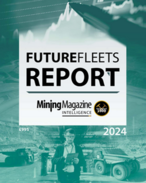The monitoring was conducted at Raymond Terrace Drive in Metford using an Osiris particulate matter monitoring device from November 30 to January 29.
ARTC chief executive John Fullerton said it was the second round of particulate monitoring results released, following a pilot monitoring report released in September.
“The monitoring results released today are in line with the pilot monitoring program results released in late September 2012, which showed little difference between train types,” he said.
The latest round of monitoring expanded on the pilot monitoring program objectives aimed at determining whether trains operating on the Hunter Valley rail network are associated with elevated particulate matter concentrations and if loaded coal trains had a stronger association with elevated particulate matter concentrations than other trains on the network.
The monitoring program concluded that: “loaded coal trains operating on the Hunter Valley rail network, when measured at Metford, did not have a statistically stronger association with elevated particulate matter concentrations than other trains.”
The monitoring found there was no statistically significant difference in concentrations of Total Suspended Particulates (TSP), PM10 and PM2.5 (particulate matter with an equivalent aerodynamic diameter of 10 micrometres or 2.5 micrometres) between loaded coal trains, freight trains and passenger trains.
Similar to the previous results, the latest monitoring also found that average concentrations of TSP, PM10 and PM2.5 associated with unloaded coal trains, and average concentrations of TSP associated with loaded coal trains, were higher compared to when no train passed the monitoring station.
Average concentrations of particulate matter was also measured against wind direction during this monitoring period which shows there was a statistical difference between unloaded coal trains for TSP, PM10 and PM2.5 and loaded coal trains for TSP when compared with no trains and passenger trains passing the monitoring station.
“ARTC has provided the results of the monitoring to the NSW EPA and we will work with the authority on what next steps are appropriate in line with our Environment Protection Licence,” Fullerton said.
























